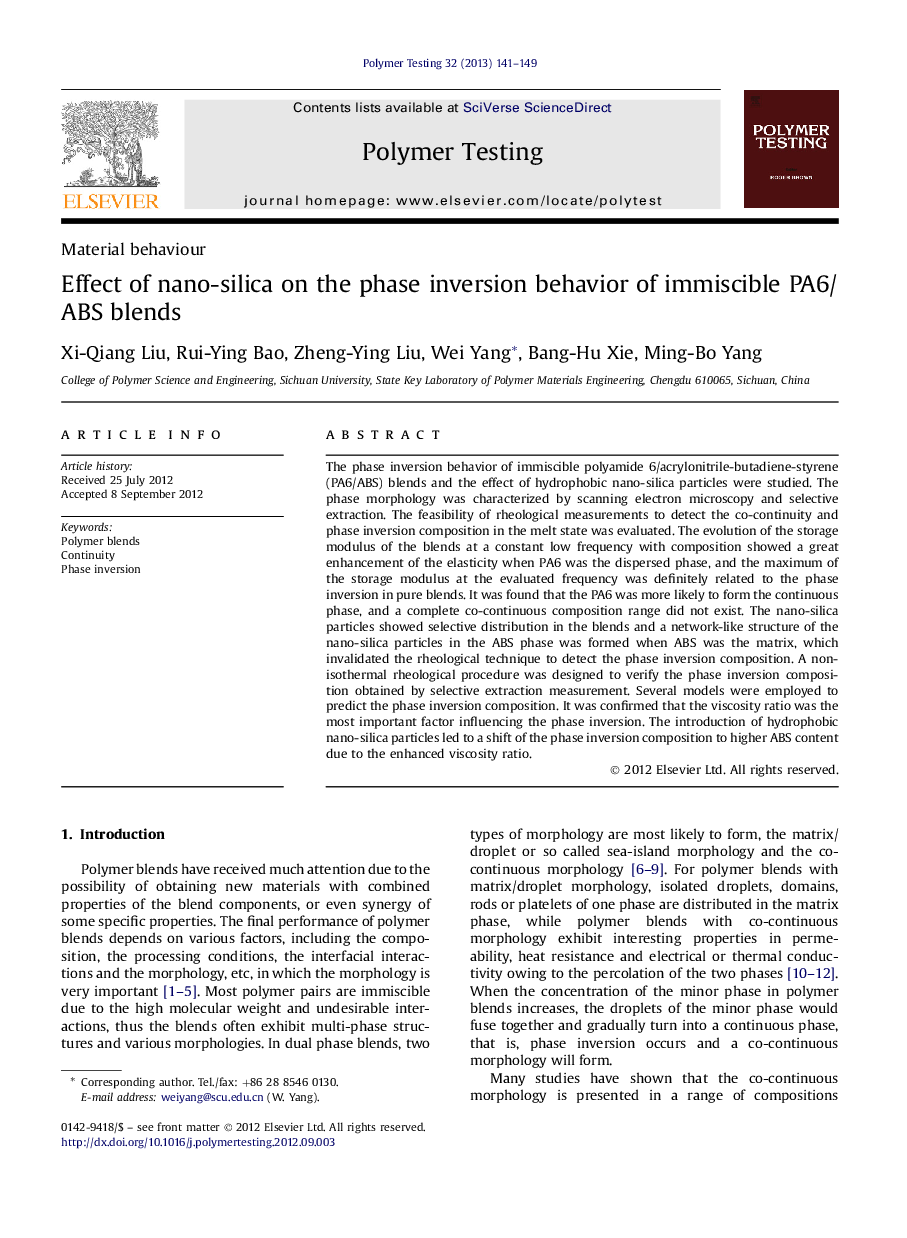| Article ID | Journal | Published Year | Pages | File Type |
|---|---|---|---|---|
| 5206556 | Polymer Testing | 2013 | 9 Pages |
Abstract
The phase inversion behavior of immiscible polyamide 6/acrylonitrile-butadiene-styrene (PA6/ABS) blends and the effect of hydrophobic nano-silica particles were studied. The phase morphology was characterized by scanning electron microscopy and selective extraction. The feasibility of rheological measurements to detect the co-continuity and phase inversion composition in the melt state was evaluated. The evolution of the storage modulus of the blends at a constant low frequency with composition showed a great enhancement of the elasticity when PA6 was the dispersed phase, and the maximum of the storage modulus at the evaluated frequency was definitely related to the phase inversion in pure blends. It was found that the PA6 was more likely to form the continuous phase, and a complete co-continuous composition range did not exist. The nano-silica particles showed selective distribution in the blends and a network-like structure of the nano-silica particles in the ABS phase was formed when ABS was the matrix, which invalidated the rheological technique to detect the phase inversion composition. A non-isothermal rheological procedure was designed to verify the phase inversion composition obtained by selective extraction measurement. Several models were employed to predict the phase inversion composition. It was confirmed that the viscosity ratio was the most important factor influencing the phase inversion. The introduction of hydrophobic nano-silica particles led to a shift of the phase inversion composition to higher ABS content due to the enhanced viscosity ratio.
Related Topics
Physical Sciences and Engineering
Chemistry
Organic Chemistry
Authors
Xi-Qiang Liu, Rui-Ying Bao, Zheng-Ying Liu, Wei Yang, Bang-Hu Xie, Ming-Bo Yang,
